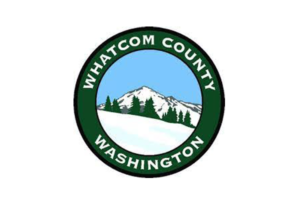A lot has happened since we first explored the idea of a rural grocery store housing a local food hub, almost two years ago! The concept is one we continue to be excited about and see tremendous potential in.
A quick refresher: Independent rural grocery stores are facing challenges and going out of business at a rapid rate. At the same time, it has been difficult to make food hubs in rural communities financially viable, due to production and demand limitations as well as logistical challenges with accessing larger markets. It was hypothesized that embedding food hubs within rural grocery stores could be an innovative solution – bringing stores new revenue streams that leverage their infrastructure and skilled staff, enabling these stores to differentiate themselves from corporate competitors, and reducing the revenue threshold that standalone rural food hubs would otherwise have to meet in order to be financially viable. (Read more in our November 2014 blog post Rural Grocery Stores as Food Hubs — 2 Birds, 1 Stone?)
During the first half of this year, we had the opportunity to take this ideation to the next level, by working directly with three visionary grocery store owners across three states – Kansas, Iowa and Michigan – on store-specific studies whose objectives were to:
- Understand how each of their specific stores could be utilized as a food hub, based on infrastructure, storage space, layout, and staff capacity.
- Assess the production of local food in these stores’ regions, and identify producers interested and able to supply to them if they were to develop a food hub.
- Identify high potential buyers or strategic partners who could drive sales for their food hub.
- Assess the profit potential that a food hub could bring to their store.
The project was funded by USDA Rural Development and Agricultural Marketing Service, and was conducted in partnership with the University of Northern Iowa’s Center for Energy and Environmental Education, Kansas State University’s Rural Grocery Initiative, Michigan State University’s Center for Regional Food Systems, GNB Bank, and Northeast Michigan Council of Governments.
Okay, so what did we find?
First, we were extraordinarily impressed with the store owners we worked with. These were some of the most business minded, sharp, thoughtful individuals we’ve had the chance to work with. They were not afraid of change and innovation (in an industry that often shuns both) but at the same time, posed insightful questions throughout. They were deeply committed to both their stores and their communities. They understood their stores’ operations and financials like the back of their hand, allowing them to provide highly strategic guidance and input at each step of the study. This not only made the work incredibly fun for us, but also reinforced the notion that – for those rural grocery stores that are well structured to house food hubs – these incredibly skilled operators would be up for the challenging task at hand.
Second…drum roll please…yes!
Preliminary analysis suggests that a food hub within a rural grocery store can have strong potential for success, depending on the store’s specific storage capacity and configuration, access to local farm products, and levels of consumer interest in local.
Four stores were assessed (one of the three store owners runs a small regional chain, and we analyzed two of these stores) and the output demonstrated a wide range of profit potential.
The models we developed for each store’s profit potential were driven largely by the following assumptions:
- Cold and dry storage capacity
- Potential turns per week the store’s food hub could make (based on the store’s schedule for receiving and stocking grocery items)
- Local food landscape and available crop set
- Breakdown of likely buyers the store would sell to
- Seasonal availability of product in the region
One store studied has the potential to generate over $100,000 annually in profit contribution from an embedded food hub. This store has extensive storage capacity, and has the ability to sell high volumes of produce within their store (due to both the demand their customers have for local and the sheer volume of sales they generate).
On the other hand, one store has very limited potential (maxing out at less than $5,000 in profit contribution from a hub). Most likely this store would not pursue a food hub unless there were strong, non-monetary reasons driving this decision – such as a strong interest in serving the local community or the impact this strategy might have on PR.
The other two stores were in the middle, with profit potentials ranging from $10,000 to $15,000 annually. While $15,000 may not seem like a substantial opportunity, it would provide significant increases to the bottom lines of both of these stores. These stores were intrigued by the outcome of the study, and expressed interest in further pursuing the development of a food hub in their store.
These interested store operators felt that the right next step would be to run a small pilot, executing a handful of transactions between growers and buyers identified through these initial studies, in order to test the impact of food hub transactions on their facility, staff and overall operations.
What are the factors driving such a wide range in profit potential of these four stores? There seem to be quite a few, but here are the top three we’ve found:
- High volume of product that can be moved through the store’s existing infrastructure. This could be due to the store having large and unutilized storage space and/or the store having very tight inventory management, with current stocking strategies that enable a food hub to execute two or more turns per week.
- Ability to sell product at a reasonably high margin. Because these food hubs are unlikely to be high volume operations, the ability to secure strong gross margins is critical. Given this, the stores that see significant potential to sell a portion of local goods within store or their broader network of stores, or sell directly to customers through a CSA could secure higher prices and margins, and therefore be better set up for success.
- Access to local product in the region, especially produce, eggs, and meats that are processed and ready to sell. Some rural grocery stores have very little production around them beyond commodity crops and therefore are not well positioned to support a food hub effort.
Read our recently released summary of findings of this work in our report “How Might a Food Hub Operating within a Grocery Store Benefit Rural Communities?”
Introducing a New Food Hub Self-Assessment Tool for Rural Grocery Stores
One unexpected but very exciting initiative that emerged from this study is a Food Hub Self-Assessment Tool for Rural Grocery Stores. Store owners nationwide can input basic information about their stores and assumptions about a potential food hub in their operation, and receive immediate estimates of the potential additional revenue and profit contribution a hub could generate for their business.
The tool was developed because we started to see similar discussions and calculations as we were assessing the potential for a food hub across the four stores we studied – despite the fact that the stores were so distinct. We saw an opportunity to streamline the initial opportunity identification process for other stores by creating this automated, online tool.
This tool should be considered a very preliminary analysis to help store owners determine if the concept of a food hub is worth pursuing further.
The self-assessment tool can be accessed here.
If you are a store owner interested in helping us test and refine the tool by providing written feedback and suggestions, please contact us.
What is next? It doesn’t stop here!
New Venture Advisors is working with the North Central Kansas Rural Development Council (representing twelve counties in Kansas) on a full feasibility study and pilot demonstration project for two store owners in the region who are interested in embedding a local food hub in their operation. As part of this study, a handful of stores will complete the beta self-assessment tool, and those with promising results will embark on a market assessment to identify suppliers, buyers and establish a more concrete business model for their stores’ food hub. If this analysis is promising, we will work with the highest potential stores to conduct a food hub pilot, testing a series of transactions to confirm assumptions on pricing and costs and assess the impact of the hub on store operations.
Additionally, in developing this food hub self-assessment tool for grocery store owners, we saw a broader opportunity to help food systems leaders and aspiring food hub operations quickly and inexpensively conduct preliminary assessments of the opportunity and potential of a food hub in their region – before investing capital into in-depth planning and development of a hub.
We are thrilled to begin the process of creating additional tools including a Preliminary Food Hub Assessment. These tools are being developed with the support of the USDA’s Local Food Promotion Program, and aim to enable users to input a series of baseline assumptions about their regional food system, and receive preliminary results on the potential financial viability and economic impact of the hub they are considering establishing. Our hope with these tools is that users can more quickly identify high potential opportunities in their local food systems, groups can avoid pursuing ideas that are unlikely to be successful, unnecessary competition between neighboring food hubs can be eliminated, and that planning and development funds may be used as efficiently as possible going forward.
As we embark on this new, innovative project, we look forward to food systems stakeholders to help establish and refine assumptions, methodology and optimal output. If you are interested in getting involved, contact us here.



